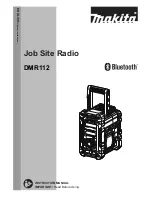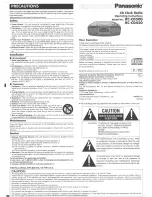
Operation
Power supply:
The PFR-3B rig should be powered by no more than about 12 volts and no less then 8 volts. Maximum supply current
at full transmitter output is typically less than 800 ma.
If a 13.8 volt bench supply is used to power the rig,
two silicon rectifier diodes should be added in series with the positive supply lead to drop the voltage down
closer to 12 volts.
This will ensure the rig does not put out more than about 5 watts. 5 watt output at 12 volts
was chosen as this is the typical voltage a gel-cell battery settles down to after it has been removed from its
charger. Below 8 volts, the 6 volt regulator for the receiver will start to lose regulation. Since transmit power
output is dependent on supply voltage, a variable supply is a handy way to adjust the power output level. At the
minimum supply voltage of 8 volts, the transmitter will deliver about 2 watts output. Transmitter current will
also be reduced at lower supply voltages, extending battery life.
Power switch:
The power switch has three positions. OFF, Internal (battery) power and External power.
When the rig is first turned on, the display will show all “8”s for a few seconds. This is the segment display
test. Then the display will indicate the currently selected band, “20”, “30” or “40”. The band numbers will be
displayed for another couple of seconds, then the display will change to show the operating frequency. Since only
four digits are available, only the 100 kHz to 100 Hz digits are displayed. MHz digits are implied by the
currently selected band.
The initial operating frequencies loaded when the rig is powered on or when the band is changed are 7.030,000 MHz
for 40 meters, 10.110,000 MHz for 30 meters and 14.060,000 MHz for 20 meters. Once on, the last used frequency
for each band is restored when changing between bands.
Selecting operating band:
Two slide switches are used to select the operating band.
Both switches MUST be in the same band position for
proper operation.
The band switch located near the top, center of the cabinet tells the processor which band you
want to use and will indicate the selected band on the display for a second when the band is changed or on power
up, as noted above. The switch located near the top, left of the cabinet is used to connect the output of the
low pass filter to the antenna. If the two band switches are not in sync, there will be no signals in the
receiver and of course, no transmitter output. Although transmitting with improper switch settings will not
damage the transmitter, it is not recommended to do so.
After you change bands, you must re-peak the receiver input with the Rx peak control.
Tuning:
Tuning is done with the tuning knob. Tuning steps are in 50 Hz increments. Each detent will change the frequency
by 50 Hz. Since the display only has 100 Hz resolution, it will take two clicks of the encoder to see a change of
frequency on the display.
Changing tuning rate:
The tuning rate can be toggled between normal 50 Hz rate and a fast tune rate of 200 Hz by pushing and holding
down the tuning knob for longer then 1 second. The letter “F” will be annunciated if the 200 Hz rate is toggled
on or “S” for the normal rate of 50 Hz.
Tuning limits:
Tuning is restricted to be within the currently selected ham band. This is to prevent out of band transmission.
Full band coverage is available. 7.000,000 to 7.300,000 on 40, 10.100,000 to 10.150,000 on 30 and 14.000,000 to
14.350,000 on 20. Even though you can tune into the phone band, the SSB signals will not be intelligible due to
narrow CW filter.
Volume control and AGC:
The PFR-3B incorporates an audio derived AGC circuit on the audio output amplifier. This helps to limit the
volume when a strong station is encountered. This limits the signal to 1.2V p-p or about 11 mW into a 16 ohm
load. However, this is still enough to result in a very loud volume when using efficient “ear bud” type






































